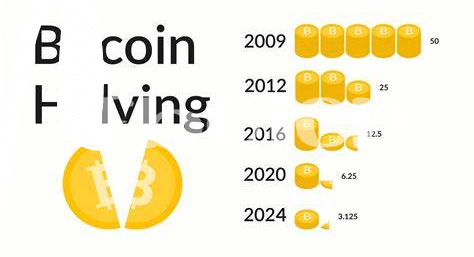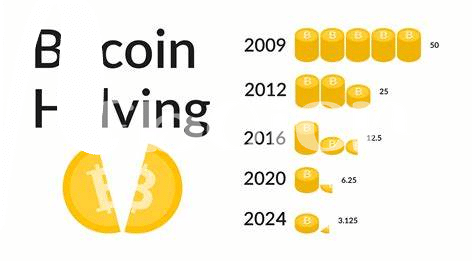What Is the Lightning Network? 🌩️

Imagine walking into a bustling marketplace, where instead of cash or cards, everyone is trading in digital gold — that’s Bitcoin for you. But as cool as it sounds, using Bitcoin for every little purchase can get a bit clunky, not to mention a tad bit slow, especially on busy days. Here’s where the Lightning Network 🌩️ swoops in, much like a superhero, to make spending Bitcoin as smooth as buying a cup of coffee. Think of it as a special express lane that lets you skip the congestion, allowing for quick, secure transactions without clogging up the main road. But here’s the kicker: it doesn’t just speed things up; it also throws on a cloak of secrecy over your transactions, making them more private.
| Feature | Description |
|---|---|
| Speed 🚀 | Facilitates instant Bitcoin transactions. |
| Privacy 🕵 | Enhances transaction confidentiality. |
| Efficiency 🔄 | Reduces the load on the main Bitcoin network. |
So, while the main Bitcoin ledger is like a publicly visible noticeboard, the Lightning Network is more like passing notes in class under the radar. It not only assists in handling smaller, everyday transactions but also ensures that these transactions remain discreet, securing users’ privacy and transforming the way we view digital currency transactions.
Understanding Bitcoin’s Current Privacy Issues 🔍
Bitcoin, at its core, is like a massive, digital ledger where all transactions are recorded for everyone to see. This transparency is great for trust but not so great if you’re trying to keep your financial business private. Imagine every time you bought a coffee, it was announced on a loudspeaker for the world to hear – that’s kind of what happens with Bitcoin. Each transaction is linked to a digital address, and with some effort, people can start piecing together who owns that address based on their activity. It’s like leaving digital breadcrumbs wherever you go. While this doesn’t immediately reveal your identity, over time, as more transactions link together, it becomes easier for someone with enough determination and resources to figure out who you are. This is a thorn in the side of Bitcoin users valuing their privacy, turning the spotlight on the need for more discreet ways to move their digital currency around without sacrificing security or the decentralized essence that makes Bitcoin special.
How Lightning Network Improves Privacy 🕵️

Imagine you send a letter with a secret message, but instead of sending it directly, you pass it through a network of trusted friends who each add their own letters to the bundle. By the time it reaches the intended recipient, your message is deeply hidden among many others, making it hard for outsiders to find. The Lightning Network works similarly for Bitcoin transactions. It creates a private pathway for transactions that isn’t recorded in the public ledger, making the financial exchange known only to the involved parties. 🌩️💼 This clever detour not only speeds things up but significantly enhances user privacy because only the final settlement is recorded on the blockchain. It’s like having a secret handshake that only you and your friend know about, keeping your transaction hidden in plain sight. This method dramatically decreases the chances of someone tracking your financial activities, offering a new layer of privacy in the digital world. 🛡️🔒
Comparing Lightning with Traditional Bitcoin Transactions 🔄

Imagine going to your local coffee shop, where you decide to pay with a shiny digital coin instead of cash. This isn’t just any digital coin, though; it’s Bitcoin. But there’s a twist. Nowadays, when you make a transaction using Bitcoin, it’s like sending a postcard – anyone who knows where to look can see the details. Enter Lightning Network, akin to sending your postcard in a sealed envelope, adding a layer of privacy to your transactions that wasn’t there before. Traditional Bitcoin transactions are stored on a public ledger, visible for anyone with internet access to see. This transparency is like a two-sided coin; while it’s useful for ensuring integrity, it’s not great for privacy. Lightning Network changes the game by allowing transactions to happen away from the public eye, settling the details privately and only displaying the final score for the public to see. This approach means fewer details are out in the open, making it harder for nosy neighbors to piece together your spending habits. For those interested in how this plays into the larger picture, especially in emerging markets, the role of bitcoin in bolstering emerging market economies in 2024 provides a deep dive into how enhancements like the Lightning Network are pivotal. Yet, as with all new technologies, there are hurdles to overcome. But for now, the promise of a more private Bitcoin transaction method is already changing how we think about digital currency transactions.
Real-world Examples of Lightning Privacy in Action 🌐
Imagine you’re sending a secret letter, but instead of mailing it directly, you pass it through a network of friends who help it reach its destination unseen. That’s a bit like what’s happening with Bitcoin transactions on the Lightning Network. For instance, in the bustling world of online gaming, where players often buy virtual goods, the Lightning Network has transformed into a cloak of invisibility for transactions. Before, everyone could see who bought what, but now, it’s like the transactions occur in a hidden alley, away from prying eyes. Moreover, there’s the story of a small café in Berlin that started accepting Bitcoin through the Lightning Network. The café’s transactions became swift and private, something both the café owner and the customers appreciated. Here, the specifics of who bought a latte with Bitcoin remain between the café and the customer, unlike before when such transactions were recorded in a public ledger, visible to all.
| Scenario | Impact on Privacy |
|---|---|
| Online Gaming | Transactions hidden from public view |
| Café in Berlin | Specific transaction details remain private |
These real-world tales showcase the shift to a more discreet way of handling transactions, offering a glimpse into a future where financial privacy is restored, thanks to the innovative use of Lightning Network.
Potential Challenges and Limitations 🚧

As the Lightning Network lights up new paths for Bitcoin transactions, its journey isn’t without bumps. While it leaps towards enhancing transaction privacy, there are hurdles that users and developers alike must navigate. For starters, setting up and managing channels in the Lightning Network can be tricky, requiring a bit of a learning curve for new users. This complexity might discourage adoption, especially for those less technologically savvy. Furthermore, liquidity can be a concern, as users need sufficient funds on the right channels to conduct transactions smoothly. Additionally, the network is still growing, and as it expands, it could face scalability challenges similar to those that initially plagued Bitcoin. Despite its promise, these challenges highlight the importance of ongoing development and research in the field. To dive deeper into this subject and explore the future of digital identity verification with Bitcoin in 2024, it’s crucial to keep an eye on solutions that address these limitations and advance the technology’s potential.
